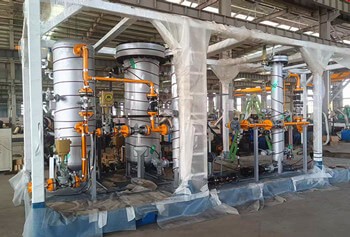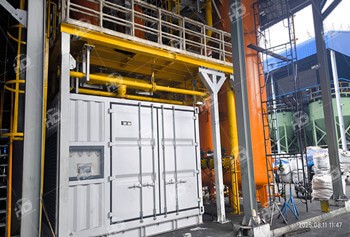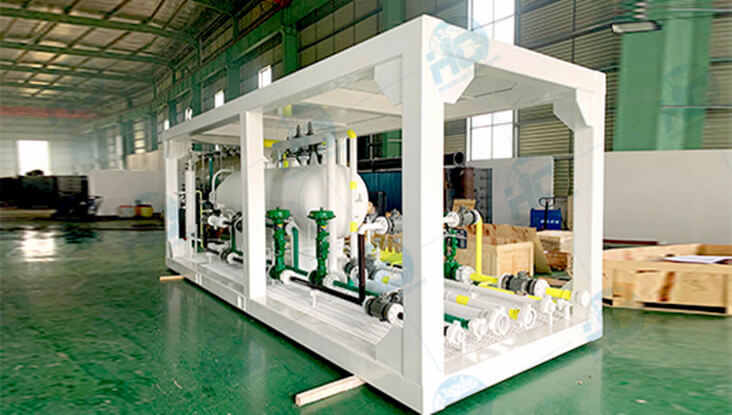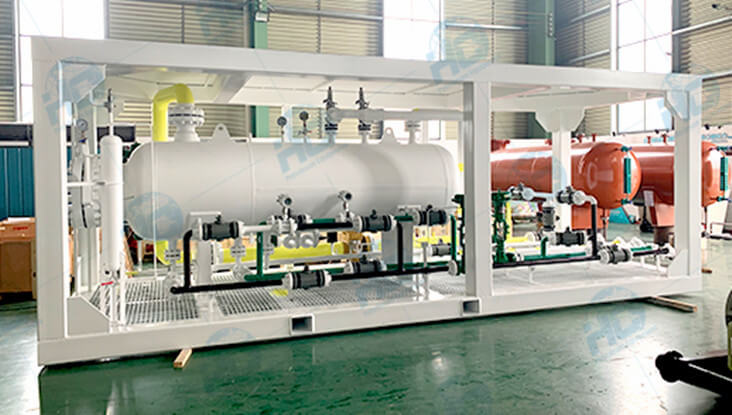In field operations, equipment performance is measured not by technical brochures, but by real-world usability. For oil-gas-water three-phase separators, engineers tend to focus on a few very practical questions: Is it easy to install? Does it provide stable and accurate level control? Is it convenient to maintain? These concerns may seem basic, but they are often the deciding factors in whether a separator becomes a dependable asset or a constant source of trouble.
Installation and commissioning are the first challenges. Many separators arrive on site with interfaces that don’t match the actual piping layout, or with control systems that require additional integration work. Oversized structures can complicate space allocation, and if there is no clear guidance on startup procedures, delays and miscommunication are inevitable. For remote or international projects, these issues can cause significant disruptions.
Next comes level control—arguably the most critical aspect of a three-phase separator’s performance. Inaccurate or unstable level control can lead to serious operational problems: water carryover into the oil phase, gas blow-by due to liquid fallback, or frequent alarms and shutdowns. This is especially problematic in wells with fluctuating gas-liquid ratios or high water cut. In such conditions, a separator must be responsive and consistent to ensure proper phase separation and protect downstream equipment.
Lastly, routine maintenance is where many separators reveal their true design quality. Poor access to manways or drain ports, difficult internal cleaning, and long lead times for spare parts can turn a simple task into an operational burden. For engineers working in demanding environments, equipment that requires excessive downtime for inspection or part replacement is far from ideal.
At HC, we take these real-world concerns seriously. That’s why our three-phase separators are designed with fully skid-mounted structures, enabling quick site installation with minimal adjustments. Control systems are pre-integrated and tested at the factory, so the unit arrives ready for power-up and system checks. For more complex sites, we also offer remote support and on-site commissioning services to streamline the process.
In terms of level control, we use high-sensitivity level transmitters paired with intelligent PID control logic to ensure fast and stable feedback. The internal structure of each separator includes flow calming features and weirs that help stabilize the oil-water interface, even under variable flow conditions. Multiple alarm levels are incorporated to give operators enough reaction time and ensure overall safety.
For long-term operation and maintenance, we’ve made accessibility a priority. All manways, drain points, and inspection ports are positioned for easy access, and our internal layout is optimized for fast cleaning without dismantling major components. We also standardize most spare parts, reducing downtime caused by part compatibility issues. For clients operating in remote locations, optional features such as automatic drain systems and online cleaning ports are also available.
Ultimately, the best separator is one that field engineers don’t have to think about—it just works. At HC, we combine practical experience with engineering expertise to deliver three-phase separators that not only meet performance targets, but also make life easier in the field.
For more information or technical consultation, please contact us at sales@hcpetroleum.hk or visit our website at www.hcpetroleum.hk.
-
2025 / 11 / 01
 HC Successfully Delivers Gas-Liquid-Sand Separator for Xinjiang Oilfield Project
HC Successfully Delivers Gas-Liquid-Sand Separator for Xinjiang Oilfield Project -
2025 / 08 / 20
 HC Successfully Delivered Filter Coalescer Skid to Malaysia
HC Successfully Delivered Filter Coalescer Skid to Malaysia -
2025 / 08 / 12
 Thailand Sulfur Removal Unit Commissioned for Natural Gas Processing Plant
Thailand Sulfur Removal Unit Commissioned for Natural Gas Processing Plant
- +86 158 6190 3617










